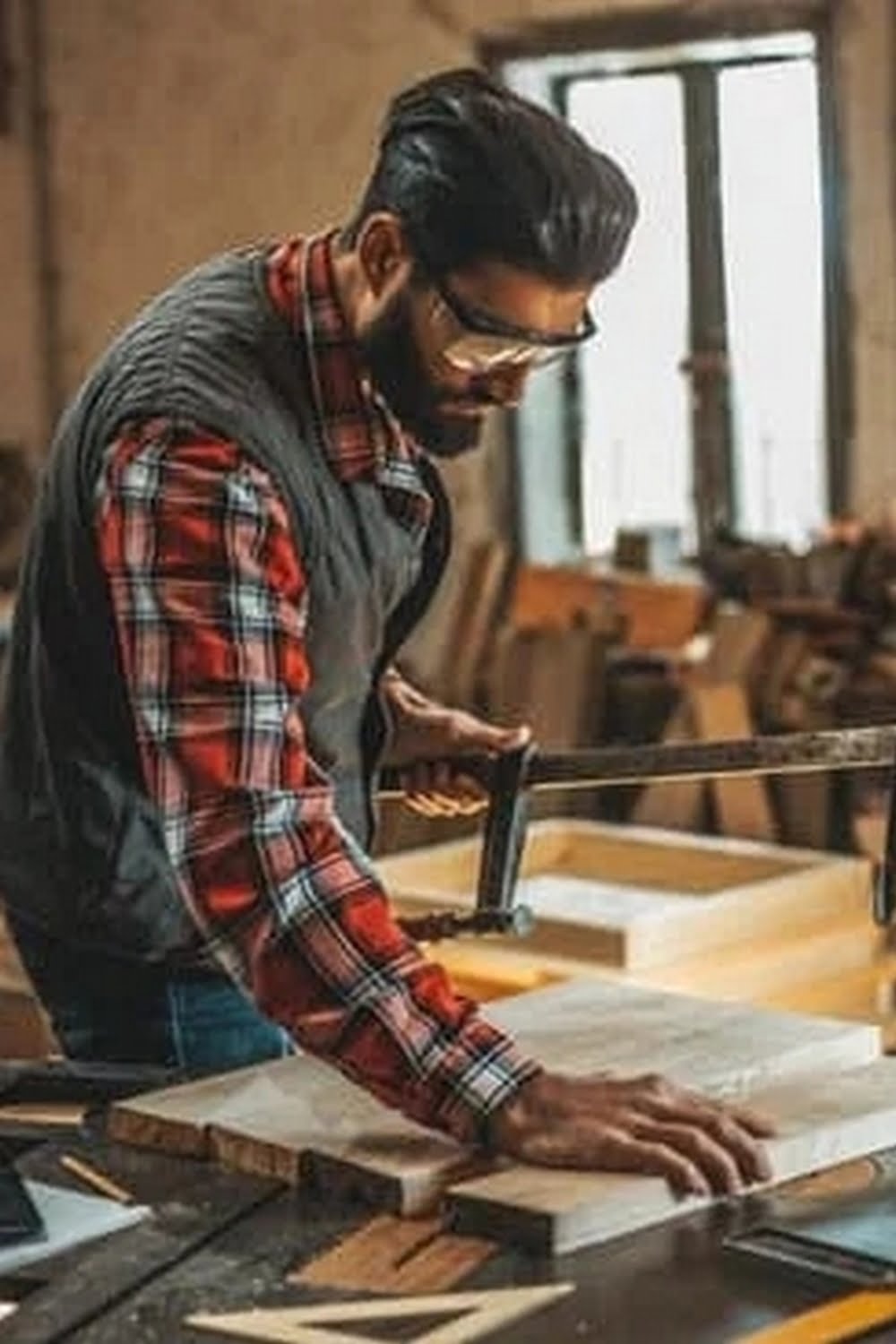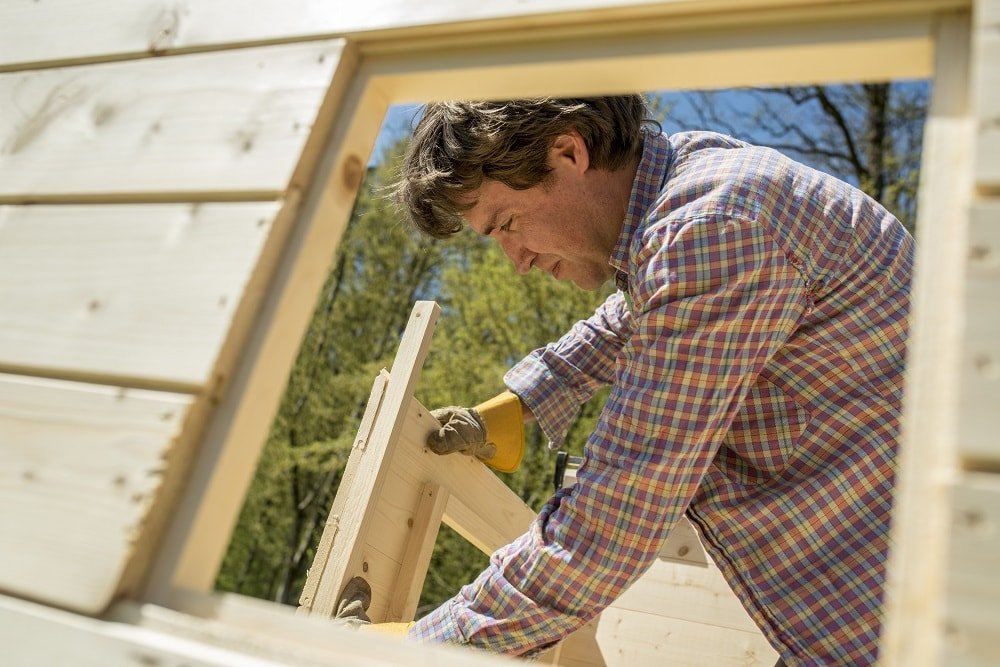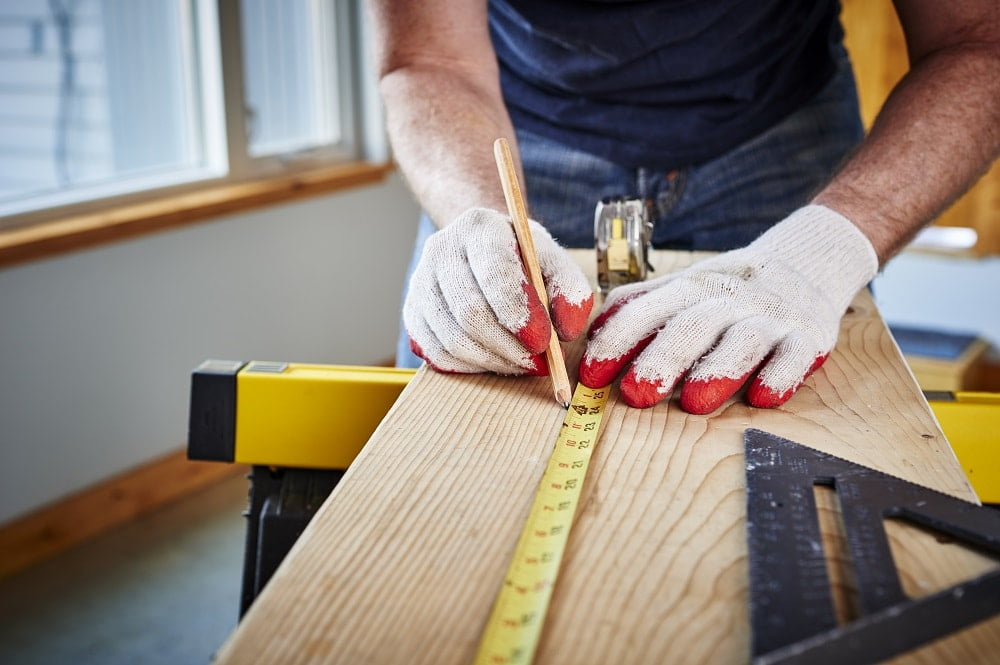Arduino woodworking projects have become a popular and innovative way for makers to combine technology with traditional woodworking skills. The integration of Arduino, an open-source electronics platform, into woodworking projects allows for the creation of unique and functional pieces that blend craftsmanship with automation. From basic beginner projects to advanced creations, the possibilities are endless when incorporating Arduino into woodworking.
By utilizing Arduino in woodworking projects, makers can add custom automation, electronic components, sensors, and programming to enhance their creations. This infusion of technology not only expands the creative possibilities but also provides a hands-on learning experience in both woodworking and electronics. Whether you are a beginner looking to dip your toes into the world of Arduino or an experienced maker seeking new challenges, there is something for everyone in Arduino woodworking projects.
In this article, we will explore the benefits of using Arduino in woodworking, discuss essential tools and materials needed for these projects, showcase beginner-friendly ideas for those starting out, delve into intermediate and advanced projects for those looking to level up their skills, provide tips and tricks for success, as well as offer resources for further learning about integrating Arduino with woodworking. Get ready to be inspired by the fusion of technology and craftsmanship in Arduino woodworking projects.
Benefits of Using Arduino in Woodworking
Arduino technology has revolutionized the world of woodworking, offering a wide range of benefits and possibilities for both beginners and experienced makers alike. One of the key advantages of using Arduino in woodworking projects is the ability to automate processes and control various functions with precision. With Arduino, woodworkers can create smart systems that monitor temperature, humidity, or even automate certain tasks like dust collection or ventilation in their workshops.
Enhanced Precision and Accuracy
Arduino woodworking projects enable users to achieve a high level of precision and accuracy in their designs and creations. By incorporating sensors and actuators controlled by Arduino boards, woodworkers can ensure that cuts, measurements, and other processes are performed with utmost accuracy. This level of control not only improves the quality of the final product but also enhances safety in the workshop.
Customization and Personalization
Another significant benefit of using Arduino in woodworking is the ability to customize and personalize projects according to individual preferences. With Arduino technology, woodworkers can incorporate unique features such as LED lighting, motorized components, or interactive elements into their creations. This opens up a world of creative possibilities for adding a personal touch to furniture, decor pieces, or even workshop tools. The flexibility offered by Arduino allows craftsmen to explore endless design variations and experiment with new ideas.
Essential Tools and Materials for Arduino Woodworking Projects
Arduino woodworking projects combine the traditional craft of woodworking with the modern technology of Arduino, creating a unique and innovative approach to creating beautiful and functional pieces. To embark on these exciting projects, there are certain essential tools and materials that you will need to have in your workshop.
Tools
One of the most essential tools for Arduino woodworking projects is, of course, an Arduino board. This microcontroller serves as the brain of your project, allowing you to control various components such as motors, sensors, lights, and more. Additionally, basic woodworking tools such as saws, sanders, drills, and clamps are crucial for shaping and assembling your wooden pieces.
Materials
When it comes to materials for Arduino woodworking projects, the possibilities are vast. You will need a selection of high-quality wood – whether it’s reclaimed pallet wood for a rustic look or premium hardwoods for a more polished finish. Other materials like screws, nails, glue, paint or stain will also be necessary to bring your project together.
Electronics Components
In addition to traditional woodworking materials, you will also need various electronic components to integrate with your Arduino board. These may include servo motors for moving parts, LEDs for lighting effects, sensors for detecting motion or temperature changes, and more. Understanding how these electronics components work together with wood is key to creating successful Arduino woodworking projects.
By ensuring you have the right tools like an Arduino board and basic woodworking tools paired with quality materials like wood and electronic components suitable for integration with the board in your workshop will set you up for success in your Arduino woodworking projects.
Beginner-Friendly Arduino Woodworking Projects
Arduino woodworking projects are a great way for beginners to dip their toes into the world of combining technology with traditional woodworking techniques. These projects offer a perfect introduction to the endless possibilities that arise when merging craftsmanship with electronics. One of the key benefits of starting with beginner-friendly Arduino woodworking projects is the opportunity to learn and experiment without feeling overwhelmed by complex programming or intricate designs.
A popular beginner project is creating an Arduino-powered LED lighting system for a wooden sign or night light. This project involves simple wiring, basic coding, and the use of commonly available tools such as a drill and sandpaper. By following step-by-step tutorials online, even those new to both woodworking and Arduino can successfully complete this project and gain confidence in their abilities.
Another beginner-friendly Arduino woodworking project is building an automated plant watering system. This project not only introduces makers to the basics of Arduino programming but also highlights the practical applications of integrating technology into everyday objects.
With just a few components like sensors, pumps, and tubing, beginners can create a functional system that keeps their plants healthy and thriving. By starting with these accessible projects, novices can gradually build their skills and knowledge to tackle more challenging endeavors in the future.
Intermediate Arduino Woodworking Projects for Those Looking to Level Up
Arduino woodworking projects are a fantastic way for enthusiasts to merge technology with traditional craftsmanship. For those looking to level up and take their skills to the next stage, there are exciting intermediate projects that can challenge and expand your knowledge of both Arduino and woodworking techniques.
To embark on intermediate Arduino woodworking projects, it is crucial to have the right tools and materials at hand. Some essential items include:
- Arduino board (such as Arduino Uno or Arduino Mega)
- Sensors (such as motion sensors, temperature sensors, or proximity sensors)
- Servo motors for automated movements
- Breadboard and jumper wires for circuit prototyping
- Woodworking tools (saw, drill, sandpaper, etc.)
Once you have gathered your tools and materials, you can delve into exciting intermediate projects that combine electronics and woodworking seamlessly. Some ideas for intermediate Arduino woodworking projects include:
- Automated plant watering system controlled by Arduino sensors
- LED lighting display embedded in a wooden sculpture activated by motion sensor
- Mechanical wooden clock with digital components powered by Arduino programming
These projects provide an excellent opportunity to hone your skills in coding, circuit design, and woodworking craftsmanship. They offer a balance of technical complexity and creative design elements, allowing you to create functional pieces of art while expanding your knowledge in both fields. By taking on these intermediate Arduino woodworking projects, you can further develop your expertise and showcase your innovative creations within the maker community.
Advanced Arduino Woodworking Projects for Experienced Makers
For those experienced with both woodworking and Arduino projects, the possibilities for creating innovative and functional pieces are truly endless. One project that advanced makers may consider is a smart workbench with integrated Arduino technology. This type of workbench can include features such as automated height adjustment, built-in lighting controlled by motion sensors, and even wireless charging capabilities for tools and devices.
Another challenging yet rewarding project for seasoned makers could be designing and building a smart furniture piece, such as a coffee table with hidden compartments or a bookshelf that doubles as a wireless speaker system. By incorporating Arduino technology into these furniture pieces, makers can elevate their craftsmanship to create not only visually appealing designs but also highly functional and interactive pieces that add value to any space.
Moreover, advanced makers may also want to explore integrating IoT (Internet of Things) concepts into their woodworking projects using Arduino. For example, creating a smart home device like an automated plant watering system or a climate control unit for a greenhouse can showcase the full potential of combining woodworking skills with Arduino programming knowledge. The ability to remotely monitor and control these systems adds another layer of complexity and sophistication to the projects.
| Project Type | Features |
|---|---|
| Smart Workbench | Automated height adjustment, motion sensor-controlled lighting, wireless tool/device charging |
| Smart Furniture Piece | Hidden compartments, built-in wireless speaker system |
| IOT Woodworking Project | Automated plant watering system, remote climate control unit |
Tips and Tricks for Success in Arduino Woodworking Projects
Arduino woodworking projects can be a thrilling way to merge technology with traditional craftsmanship. However, success in these projects requires some tips and tricks to ensure smooth and efficient execution. Whether you are a beginner or an experienced maker, following these guidelines can help enhance your skills and yield impressive results.
Here are some useful tips and tricks for success in your Arduino woodworking projects:
- Plan and Sketch: Before diving into your project, take the time to plan out your design and sketch it on paper or using design software. This will help you visualize the end result and identify any potential challenges before starting.
- Test Your Components: Make sure to test all electronic components, sensors, motors, and other Arduino accessories before integrating them into your woodworking project. This will help avoid any surprises or malfunctions later on.
- Use Proper Safety Gear: Woodworking involves working with sharp tools and power equipment. Always prioritize safety by wearing protective gear such as goggles, gloves, and a mask to prevent accidents and injuries.
Implementing these tips can significantly improve the outcome of your Arduino woodworking projects while ensuring a safe work environment. Whether you are building a simple LED light display or a complex automated wood carving machine, paying attention to these details can make a significant difference in the final product’s quality.
Showcase of Inspiring Arduino Woodworking Projects
Arduino Woodworking Projects offer a unique blend of traditional craftsmanship with modern technology, allowing makers to create innovative and interactive pieces. One inspiring project that showcases this integration is the Arduino Wooden LED Lamp. This project involves creating a beautifully crafted wooden lamp that can be controlled using an Arduino board to adjust the lighting color and intensity. It combines woodworking skills with coding and electronics knowledge, resulting in a functional and aesthetically pleasing piece.
Another impressive Arduino Woodworking Project is the Smart Wooden Planter. This project involves building a self-watering planter made from wood, equipped with sensors connected to an Arduino board. The sensors monitor soil moisture levels and automatically water the plants when needed. This project demonstrates how Arduino can be used in woodworking to create practical solutions for everyday tasks, combining creativity with functionality.
Additionally, the Arduino Wooden Clock is a popular project among makers that merges woodworking techniques with technological innovation. By incorporating an Arduino board and a real-time clock module, DIY enthusiasts can build a customizable wooden clock that displays time in various formats. This project not only serves as a decorative piece but also enhances one’s skills in woodworking, programming, and electronic circuitry.
| Arduino Woodworking Projects | Details |
|---|---|
| Wooden LED Lamp | A beautifully crafted wooden lamp controlled by an Arduino board for adjusting lighting color and intensity. |
| Smart Wooden Planter | A self-watering planter made from wood with sensors connected to an Arduino board for monitoring soil moisture levels. |
| Wooden Clock | A customizable wooden clock using an Arduino board and real-time clock module to display time in various formats. |
Resources for Learning More About Arduino and Woodworking Integration
Arduino woodworking projects offer a unique and innovative way to combine technology with traditional craftsmanship. By integrating Arduino, a versatile microcontroller platform, into woodworking projects, makers have the opportunity to create interactive and functional pieces that showcase the best of both worlds. From beginner-friendly projects to advanced creations, there is no limit to what can be achieved with Arduino woodworking projects.
For those looking to delve deeper into the world of Arduino woodworking projects, there are a wealth of resources available to guide and inspire. Online tutorials, forums, and communities are excellent sources of information where makers can learn from others’ experiences, troubleshoot issues, and share their own creations. Additionally, workshops and classes specifically focused on Arduino and woodworking integration provide hands-on learning opportunities for enthusiasts looking to enhance their skills.
As technology continues to evolve and shape the way we approach traditional crafts like woodworking, Arduino remains at the forefront of this intersection. With its endless possibilities for customization and automation, Arduino opens up new avenues for creativity in woodworking projects. Whether you’re just starting out or a seasoned maker looking to push boundaries, exploring Arduino woodworking projects is sure to ignite your passion for creating unique and innovative pieces.
Frequently Asked Questions
What Are the Uses of Arduino in Real Life?
Arduino is widely used in real life for various applications such as home automation, robotics, IoT projects, wearable technology, and even in educational settings to teach programming and electronics. Its versatility allows it to be integrated into a wide range of projects.
What Kind of Projects Are People Building With Arduino?
People are building a diverse range of projects with Arduino, including smart home systems like automated lighting and security alarms, DIY robots with obstacle avoidance capabilities, weather stations that collect and display data, electronic gadgets like digital clocks and thermometers, and interactive art installations that respond to movements or sound.
What Is the Best Site for Arduino Projects?
In the realm of online resources for Arduino projects, websites like Instructables, Hackster.io, GitHub, Adafruit’s learning system provide a wealth of tutorials, project ideas, code samples, and community support for Arduino enthusiasts. These sites offer a platform for sharing knowledge and inspiration for both beginners and experienced makers alike.

Hi everyone! I’m a woodworker and blogger, and this is my woodworking blog. In my blog, I share tips and tricks for woodworkers of all skill levels, as well as project ideas that you can try yourself.





